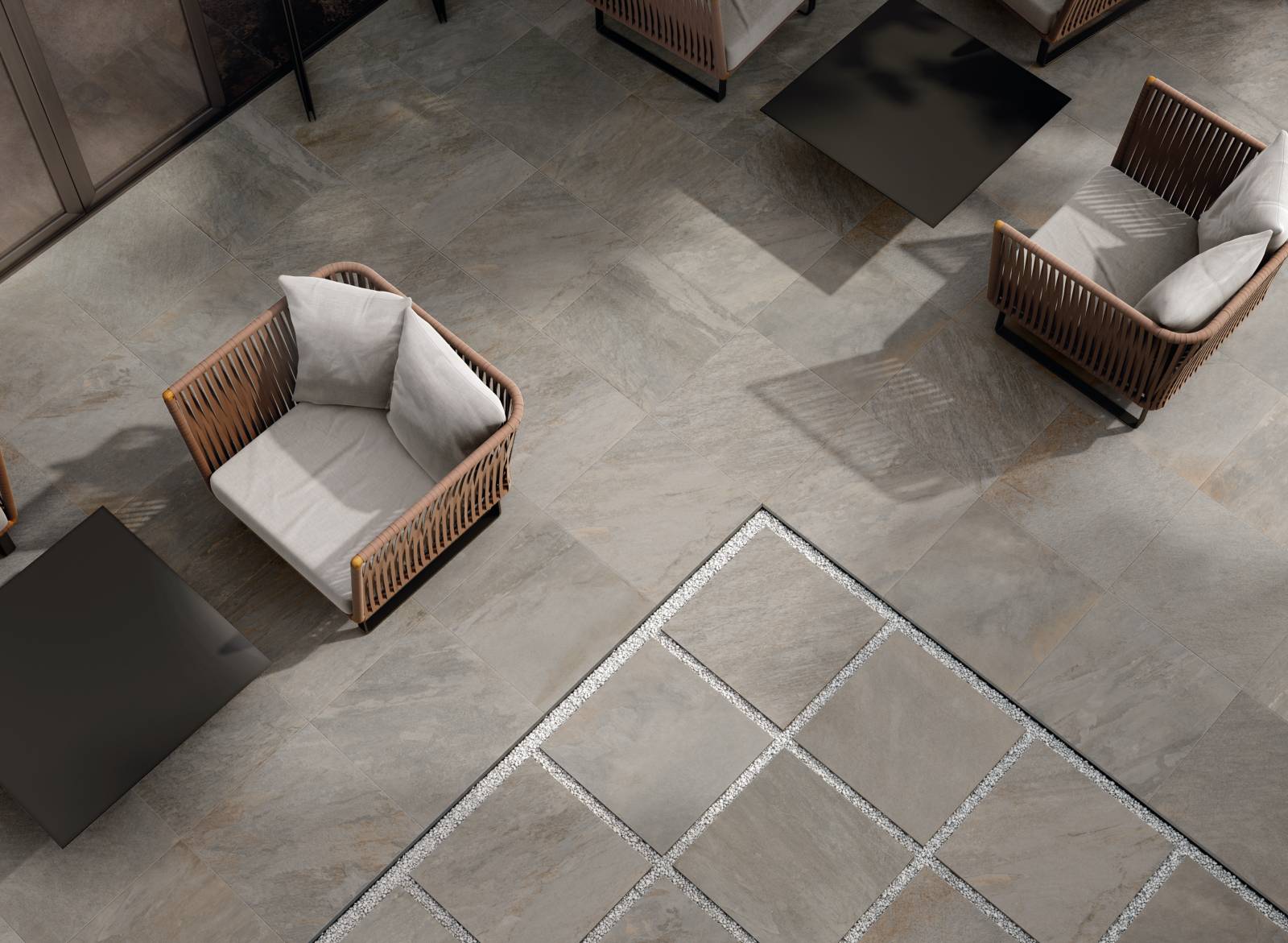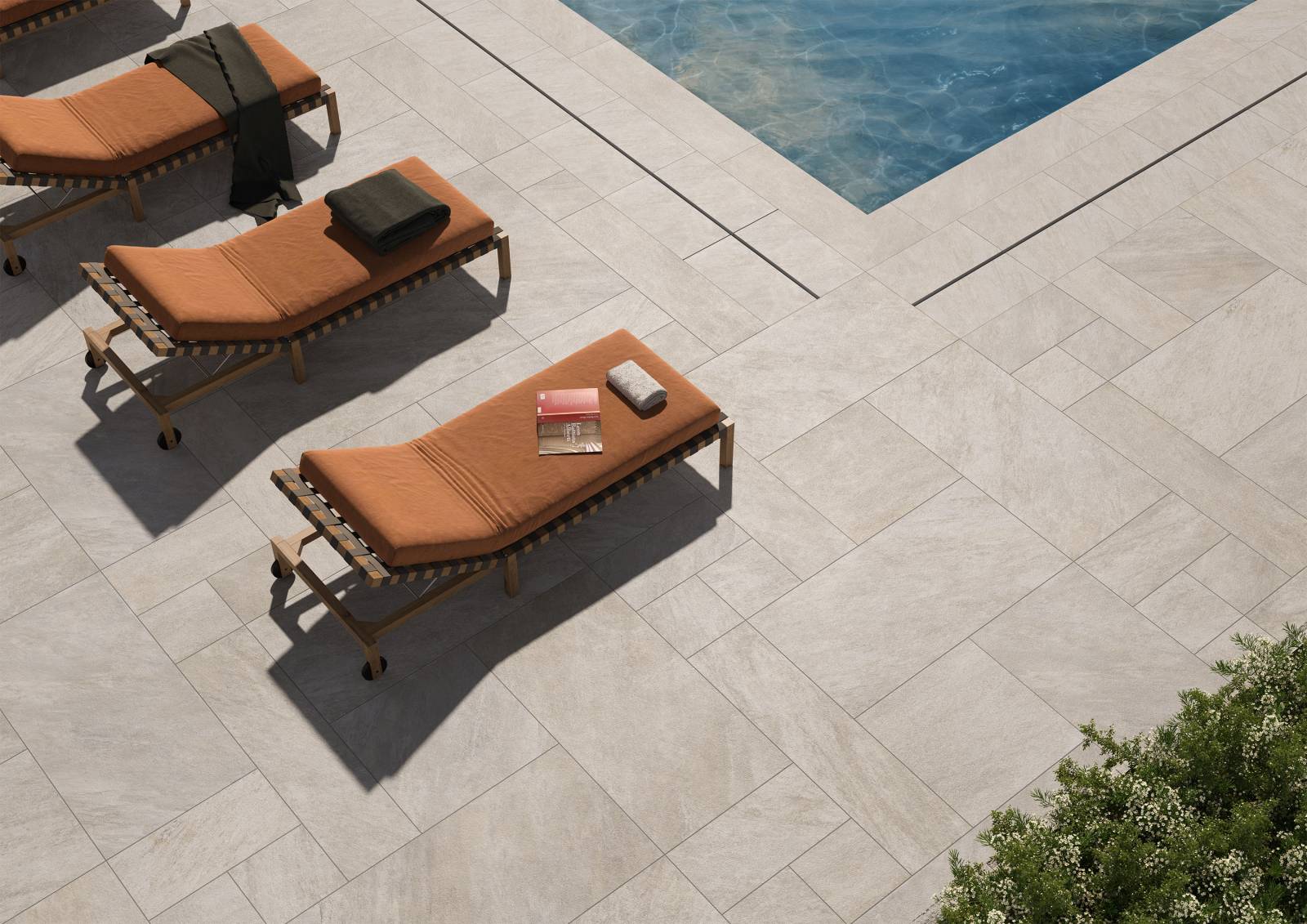

Thin pavers and outdoor porcelain tiles, which material to choose among remodel pavers?
Distinguishing thin pavers (concrete or stone pavers) from outdoor porcelain tiles, let's see some differences between the materials that can help you in your choice.
COLOR AND LOOK OPTIONSDue to production processes, colors and shades of concrete pavers have a rather limited number of variations, leaving little options for customization. The graphic rendering of outdoor porcelain pavers and porcelain grip tiles, on the other hand, offers a very rich range of options, with a highly personalized variation of light and depth of color and a potentially infinite variety of looks. Outdoor porcelain pavers and porcelain grip tiles are also very similar to natural stones, so much so that it is often impossible to spot the difference.
MAINTENANCE AND DURABILITYConcrete pavers are generally strong and durable even when faced with very heavy loads. However, their porous surface can fade or even erode and wear over time, as well as requiring periodic sealing and maintenance. On the other hand, if you're looking for a low-maintenance product, outdoor porcelain pavers and porcelain grip tiles, a denser and harder material, can be a smart solution because they require minimal maintenance, are stain and chemical resistant and don't need to be sealed, offer excellent durability, strength and resistance to breaking and scratching and, unlike concrete pavers, they don't wear out and their color doesn't fade.
THICKNESSDid you know that standard porcelain pavers and porcelain grip tiles are even slimmer than other thin pavers? Porcelain pavers have a thickness of about 3/4 inch and porcelain grip tiles are approximately 1/3 inch thick while thin versions of concrete or stone pavers vary from 1 inch to 1 inch and a quarter and, despite being thinner, porcelain pavers and porcelain grip tiles can be stronger and more durable than concrete and stone. This feature allows the reduction of transportation costs and the possibility of use in areas where there is little space between your door tread and the existing flooring material. In this case, even regular porcelain pavers can be a good choice over other remodel pavers because they are ¾ of an inch thick and are available in so many finishes and sizes.
ECO-FRIENDLYOutdoor porcelain pavers and porcelain grip tiles are more eco-friendly than other thin pavers. In particular, Landmark harvests raw materials using certified low environmental impact methods, in sites close to the production sites to reduce carbon dioxide emissions due to transportation. Manufacturing follows the strictest state and federal regulations and works to minimize the release of pollutants. Landmark's green commitment allows for up to 20% recycled content to be included in our U.S.-made porcelain pavers. In addition, our outdoor porcelain pavers contain no harmful resins or paints and help make the environment greener and healthier.
In conclusion, we can say that nowadays thin pavers are widely used for remodeling but, in addition to traditional remodel pavers (stone or concrete pavers), outdoor porcelain pavers and porcelain grip tiles certainly have specific features that improve their performance and make them perfect for this use. Moreover, by choosing quality pavers you can replicate the look of natural stone, benefiting from all the advantages of porcelain. Do you have any doubts? Tell us about your project and learn more about overlay pavers, outdoor porcelain pavers and porcelain grip tiles, remodeling has never been easier!



